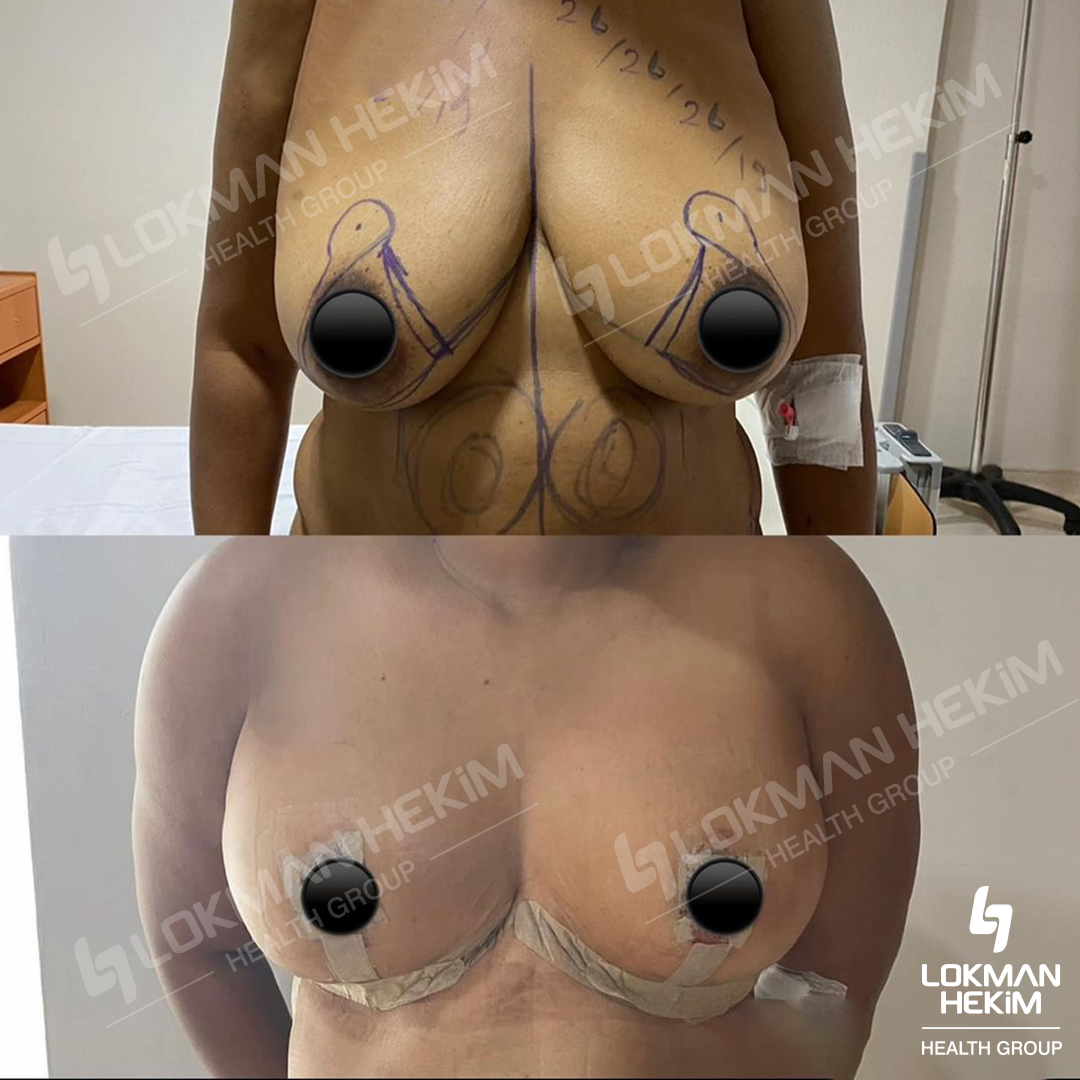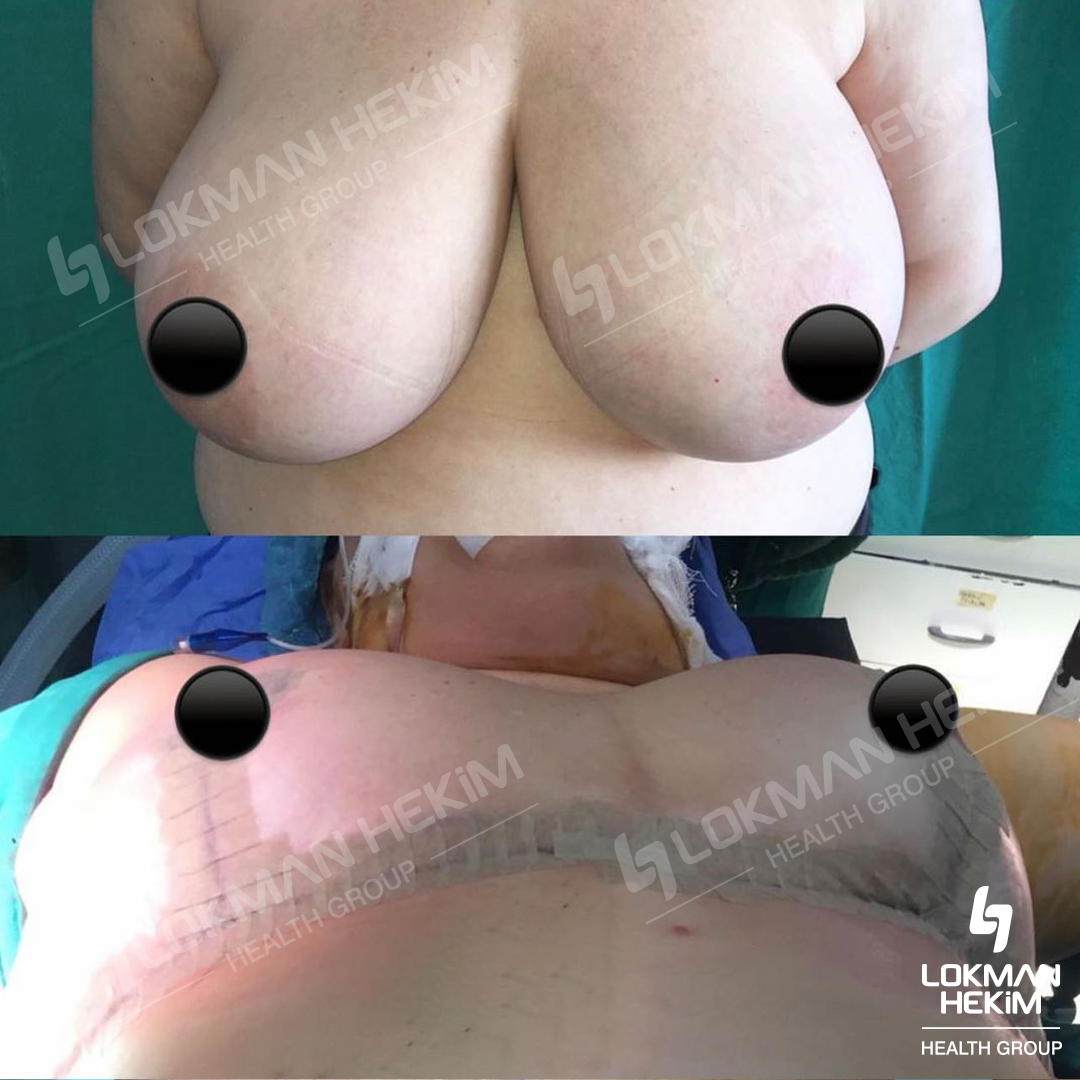Quote of Lokman Hekim
What is Breast Reduction?
Breast reduction, or reduction mammoplasty, is a surgical operation that serves to decrease the dimensions and weight of too-large breasts. The surgery relieves physical discomfort, achieves better body proportion, and improves quality of life through reshaping and resizing of the breast.
How the Procedure Works
Excess breast tissue, fat, and skin are removed during surgery. The usual incisions are around the areola and down the fold of the breast; these allow the surgeon to reshape the breast and reposition the nipple. The length of the surgery is usually 2-4 hours, and it is performed under general anesthesia.
Ideal Candidates
Candidates would include individuals who have very large breasts that serve as a source of physical discomfort, such as pain in the back, neck, and shoulders. Ideal candidates should also have good health and be realistic about the outcomes.
Benefits of Breast Reduction
- Relieves back, neck, and shoulder pains.
- Improves posture by alleviating strain on the spine and shoulders.
- Increased mobility, as smaller size often accommodates ease with physical activities and exercise.
- A more proportionate figure enables clothes to hang better and look nice on the body.
- Many patients like their new appearance after surgery and tend to be more confident.
Recovery and Aftercare
The initial recovery will take 1 to 2 weeks, but the swelling and soreness may take a while longer to reduce. Patients must minimize any heavy activity during this time and wear a support bra to soothe the healing process. The ability of most people to resume normal activities may take as long as 4-6 weeks.
Possible Complications
Although generally safe, potential risks from this surgery include scarring, changes in sensation around the nipple, and, infrequently, infection or asymmetry. With proper selection of a skilled surgeon and adherence to post-surgery care, the manifestation of these complications can be brought to a minimum.
Comparison of Breast Reduction with Other Breast Surgeries
Contrary to breast augmentation, which is designed to enlarge the breasts, breast reduction removes superfluous breast tissue with the aim of a more moderate breast size that would not give rise to uncomfortable feelings when regular activities are performed.
Large and heavy breasts are associated with considerable physical and aesthetic relief from reduction. Consultation with a certified plastic surgeon guarantees safety of approach and individualized results with counseling about optimal recovery for overall satisfaction.
- Abdominal liposuction
- Arm Lift (Brachioplasty)
- Back Liposuction
- Blepharoplasty (Eyelid Surgery)
- Brazilian Butt Lift (BBL)
- Breast Augmentation
- Breast Augmentation with Tear Drop Implants
- Breast Correction
- Breast Implant Removal
- Breast Implants With Breast Lift
- Breast Lift
- Breast Reconstruction
- Brow Lift
- Buccal Fat Extraction
- Butt Implants
- Buttock lift
- Buttock Reduction
- Cheekbone Reduction
- Chin Implant
- Chin Liposuction
- Health Insurance
- Online Healthy Life Assistant 9/5
- Post - Experience Follow Up 6 Month
-
Extra Privileges
No suitable hotels were found on the relevant dates!
- Health Insurance
- Online Healthy Life Assistant 24/7
- Post - Experience Follow Up 1 Year
- Pre-Treatment Doctor Consultation
-
Extra Privileges
No suitable hotels were found on the relevant dates!
 Private
Private
- Health Insurance
- Healthy Life Butler
- Post - Experience Follow Up 2 Year
- World-Famous Doctor Consultation
-
Extra Privileges
No suitable hotels were found on the relevant dates!
* Price varies depending on extra and upgrade selections.
Women grappling with complications linked to large breasts often consider breast reduction. These complications include: - Back and neck pain - Poor posture - Chronic rash or skin irritation beneath the breast fold - Shoulder pain - Difficulty in finding suitable clothes or bras - Nerve pain - Limitations in physical activity and participation in certain activities
Conducted under general anesthesia, breast reduction surgery spans approximately three to four hours. This comprehensive process involves the removal of excess fat, glandular tissue, and skin. Two methods are employed for fat removal: the excision technique and liposuction. Liposuction may be employed independently if excess skin is not a factor. However, in most cases, a combination of surgery and liposuction is planned. As with any cosmetic surgery, breast reduction procedures are individualized, tailored to factors such as the patient's condition, breast composition, and the desired degree of reduction.
Recovery spans two to six weeks, necessitating initial rest, with the first week or two often requiring time off from work and responsibilities. Incisions remain concealed beneath bandages, and a post-operative bra is provided. Managing post-surgical pain, engaging in gentle activities like walking during the first week, and avoiding heavy lifting are key components of early post-op care. After two weeks, a gradual return to normal activities begins, with low-impact exercise considered around the end of the first month. Benefits, such as diminished neck and shoulder pain, become noticeable, showcasing the positive effects of the procedure.
Results are enduring as removed tissue does not regenerate. Aging, may impact long-term results, potentially leading to sagging over time.
Discussing pregnancy plans with the surgeon is crucial. Breast reduction surgery can potentially impact breastfeeding. It may be advisable to delay the procedure until after having children.






